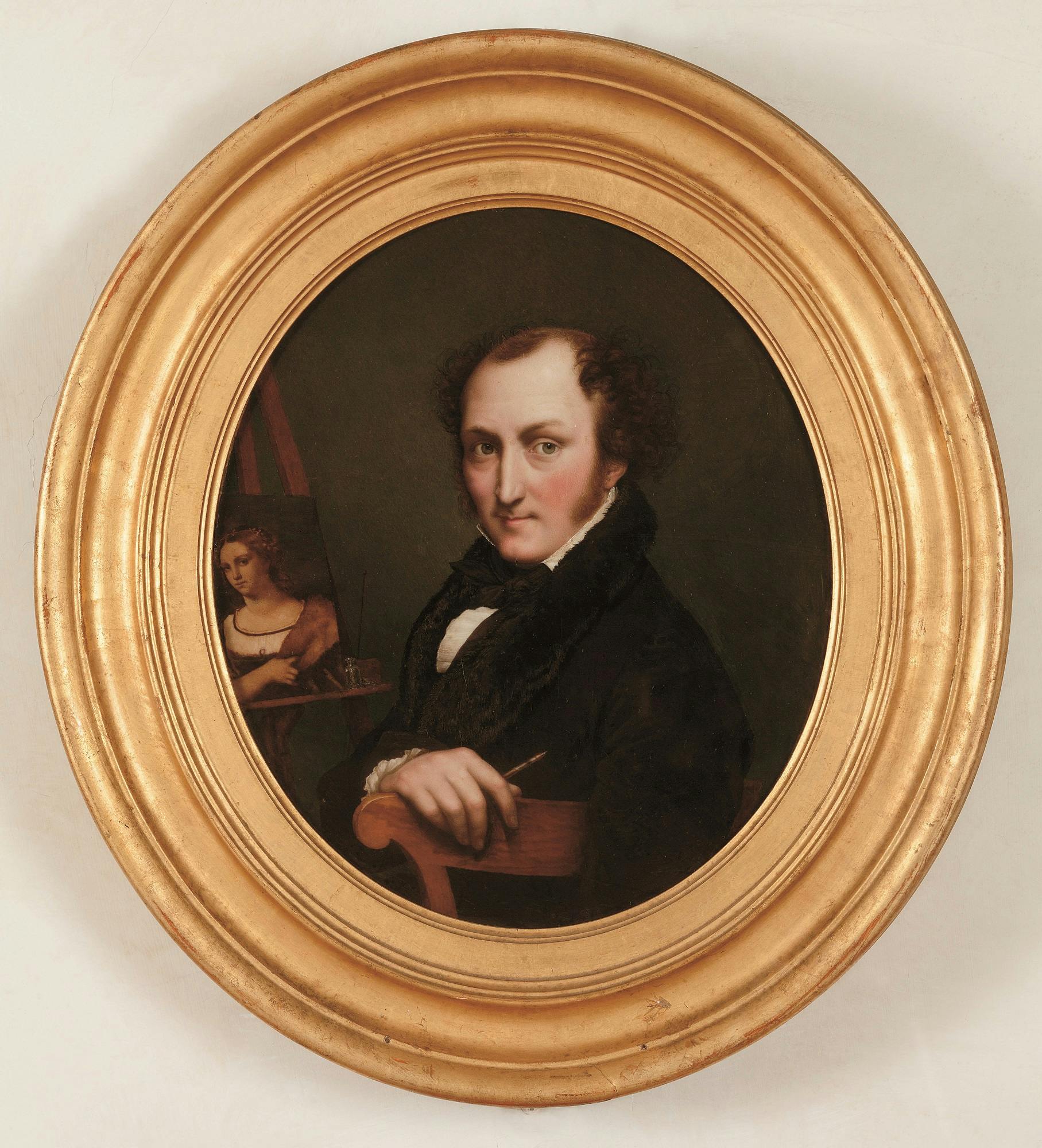Self-portrait of Abraham Costantin
Sèvres Factory
The Swiss Abraham Costantin joined the Sèvres National Factory in 1813 as a miniaturist. In 1820, he was sent to Florence by the then director Alexandre Brongniart to copy from life the 16th-17th century paintings preserved in the Royal Galleries onto porcelain plates. This technique was very complex and required considerable skill: one of the greatest difficulties was transporting the porcelain artefacts without them having been fired, which risked dispersing pigment that was not fixed to the surface. This prompted Brongniart to ask the Ginori Factory for help, which made its ovens available on the condition that the painter teach this technique to some of Doccia's most promising painters. It was thus that knowledge of this type of decoration arrived in Tuscany and became a phenomenon of taste intended mainly for travellers and refined connoisseurs of the paintings of previous centuries.
The self-portrait on porcelain plate presented here was executed by Costantin himself and is inspired by the three versions he made on canvas, from a gouache drawing given to him by his friend Jean-Auguste-Dominique Ingres. In this version, he portrays himself seated with paintbrush in hand as he is intent on reproducing Sebastiano del Piombo's Fornarina, a masterpiece preserved in the Uffizi. As many as four firings are noted in the Doccia Factory registers for this specimen, probably due to continuous pictorial corrections. The work was donated by the author for the Imperial and Royal Gallery's collection of self-portraits.
